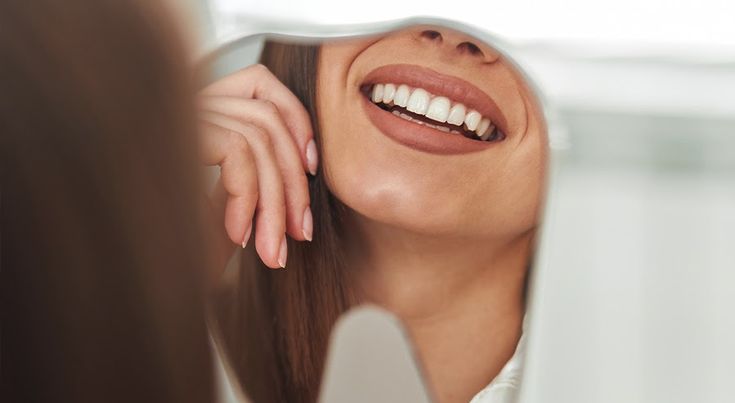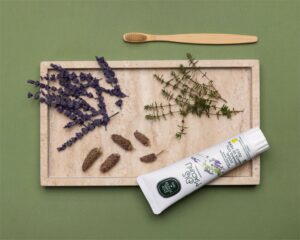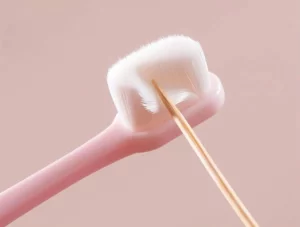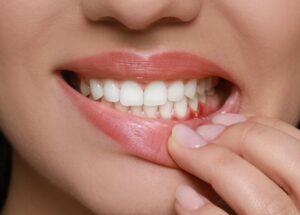Ever caught yourself looking in the mirror and wishing your smile was just a little bit brighter? Yeah, me too. That coffee habit can really do a number on your pearly whites, right? But don’t sweat it. There are tons of tooth whiteners out there that can help. Seriously, so many options. Imagine sitting in your bathroom, staring at your reflection. Your coffee habit? It’s left its mark. Teeth not as white as they used to be. You think: “Time for a change.” And that’s where tooth whiteners come in. They’re not just products; they’re your ticket to confidence, boosting that smile without the drama. They’re also simple to use and mostly affordable. In fact, most people have tried some version strips, pens, pastes you name it.. Whitening strips, gels, pens, toothpaste, you name it. The options? Endless. Bright, confident, and unstoppable. It’s like, you walk down the dental aisle, and it’s a sea of whitening strips, toothpastes, gels, and even LED kits. What’s a person to do? Well, the experts say it’s all about what works for you.
The Gold Standard: Professional Tooth Whiteners
Experience rapid, noticeable results under expert care.
First up, professional teeth whitening is the gold standard. Done by your dentist using special gels and lights—like Zoom, KöR, or Opalescence—these treatments work fast and can give you major results in just one visit. They protect your enamel with ingredients like calcium phosphate and fluoride and reduce sensitivity. Fancy stuff. But yeah, it usually costs more. These potent tooth whiteners are supervised, ensuring safety and optimal results. You want teeth that shine. Pick your dentist. They’re the pros.
Why Professional Whitening Excels?
The concentration of bleaching agents, typically hydrogen peroxide or carbamide peroxide, is significantly higher in professional settings. This allows for deeper penetration and more effective breakdown of stubborn intrinsic stains that lie beneath the enamel surface. Plus, dentists can customize trays for a perfect fit and apply protective barriers to safeguard your gums, minimizing sensitivity. It’s fast, effective, and controlled key for serious results.
Accessible Solutions: At-Home Tooth Whiteners
Achieve a brighter smile at your convenience with effective home products.
Now, if going to the dentist isn’t your vibe, there are over-the-counter (OTC) tooth whiteners. You’ve seen them: whitening strips, gels, toothpastes, even mouthwashes. They often rely on peroxide too, but the strength is lower than professional gels, so expect it to take longer to see any real shine. Some claim quick results, but usually, it’s a slow game—like 2 shades lighter over weeks. DIY home kits are everywhere. These come with trays or strips you apply yourself. They use peroxide-based gels too, just weaker ones. Less pricey, less speedy, but better than nothing if you’re patient.
Whitening Strips and Gels: Your Go-To for Gradual Brightening
Some folks swear by the convenience of whitening strips. They’re pretty easy to use, just stick ’em on and go. Crest 3D Whitestrips are a classic for a reason, and people love them. Then there are the whitening toothpastes. These are great for keeping up that just-left-the-dentist clean look, especially after you’ve done a more intensive treatment. They help with surface stains. Think of them as your daily smile maintenance crew. They’re common. They’re available. They work over time.
The Science Behind At-Home Whitening
Here’s the deal. Tooth whiteners work because they contain bleaching agents like hydrogen peroxide or carbamide peroxide. They break down stains inside the enamel. Sounds fancy, huh? But it’s really simple. Apply, wait, watch your teeth get brighter. Sometimes in just a few days. That’s the magic of tooth whiteners. For those of us with sensitive teeth, it can be a bit of a minefield. You want whiter teeth, but you don’t want the ouch. Dentists suggest looking for gentler formulas or trying products with lower concentrations of active ingredients. Sensodyne makes some good toothpaste for this, and there are even whitening strips designed specifically for sensitivity. It’s all about finding that balance. For the best results, consistency is key. Don’t quit. Keep at it.
Understanding Ingredients and Effectiveness
Not all tooth whiteners are created equal. Know what’s inside.
But hold on. Not all whiteners are created equal. Some are gentle, perfect for sensitive teeth. Others are more powerful, for those stubborn stains. Best? The ones recommended by dentists. These tend to be safer and more reliable. Professional-grade products pack a punch, but they’re still user-friendly enough to do at home. Just follow instructions. No shortcuts. Results differ. Some see a couple of shades whiter after a week. Others might need a month. And yes, few products cause minor sensitivity. That’s normal. But don’t ignore your teeth. Always check with your dentist if you’re unsure. Better safe than sorry. Avoid that pain.
The Power of Peroxides
Hydrogen peroxide and carbamide peroxide are the big players here. They’re the ones that really break down those stubborn stains. Many dentists recommend products with these ingredients because they’re proven to be effective. Some kits even come with LED lights to boost the process. Pretty cool, huh? Studies show it’s effective, up to 6% concentration for real results. But casually speaking, don’t go overboard. Over bleached once and oops, sensitive gums for days. Keep it balanced. These active ingredients penetrate the enamel to reach and lighten chromogens, the compounds responsible for tooth discoloration. It’s chemistry in action.
What to Avoid: The Charcoal Hype
Oh, and don’t fall for charcoal toothpaste hype. It’s just abrasive and doesn’t brighten beneath surface stains. So, it’s not really a “tooth whitener” in the true sense. It might remove surface stains due to its abrasive nature, but it won’t change the intrinsic color of your teeth and can even damage enamel with prolonged use. Skip it. Your teeth will thank you.
Maintaining Your Bright Smile
Tips and tricks to keep your teeth sparkling long after whitening.
Now, let’s talk about keeping that sparkle. You gotta be smart about what you eat and drink. If it can stain a white t-shirt, it can probably stain your teeth. So, maybe ease up on the red wine and coffee for a bit, or at least rinse your mouth after. And hey, smoking is a big no-no if you want to maintain that bright smile. It’s all about good oral hygiene too. Brush and floss daily! It’s not super glamorous, but it works. Brush twice a day. That’s formal advice, right? But hey, don’t overthink it. Always brush. Always floss.
Daily Habits for Long-Lasting Whiteness
Sarah tried baking soda mixed with hydrogen peroxide. Simple paste, easy peasy. Her teeth got brighter in weeks. Short and sweet: It actually works. Now, mix in some casual vibes—yeah, I said it, go ahead and slurp that coffee, but rinse right after. Prevents new stains dead quick. She avoided sugary snacks and acidic drinks. Why? They erode enamel, making teeth look dull. Instead, she flossed daily—formal habit, but it felt casual after a while. Tooth whiteners like whitening toothpaste? Game changer. They remove stains without harsh chemicals. It’s easy. It’s effective. Just do it.
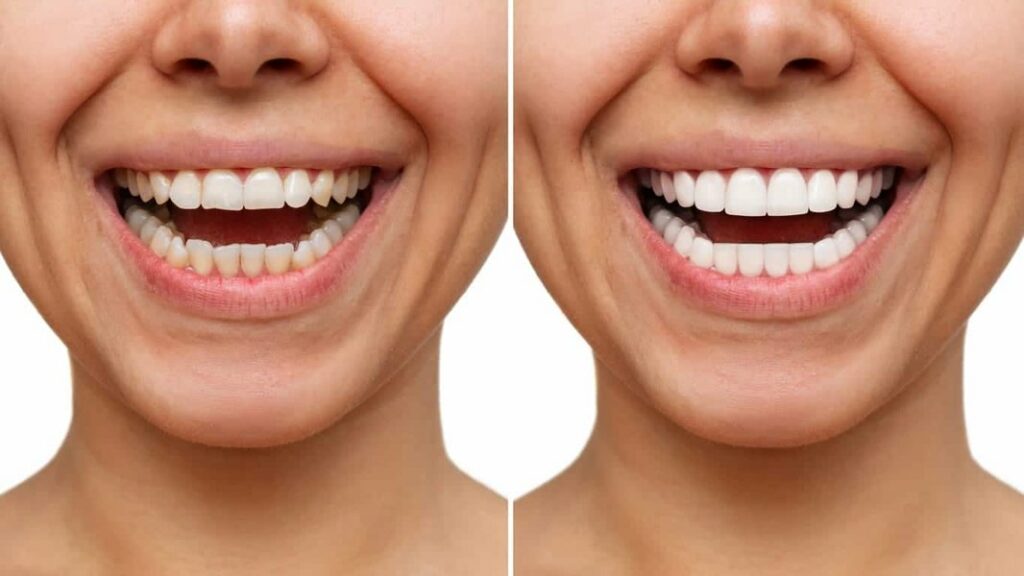
Maintaining results? Easy. Brush, floss, and skip the stain-causers. Tooth whiteners last longer if you’re consistent. One more abrupt sentence: Don’t forget water rinses after meals. They’re the unsung heroes. All in all, tooth whiteners transform smiles, but safety first. They’re effective and, when done right, totally worth it.
Maintaining Your Bright Smile
Learn how to achieve and maintain your brightest smile.
Disclaimer: This content is based on research from trusted medical sources and has been reviewed for accuracy. It is for health education purposes only and does not replace consultation with a qualified dentist.
